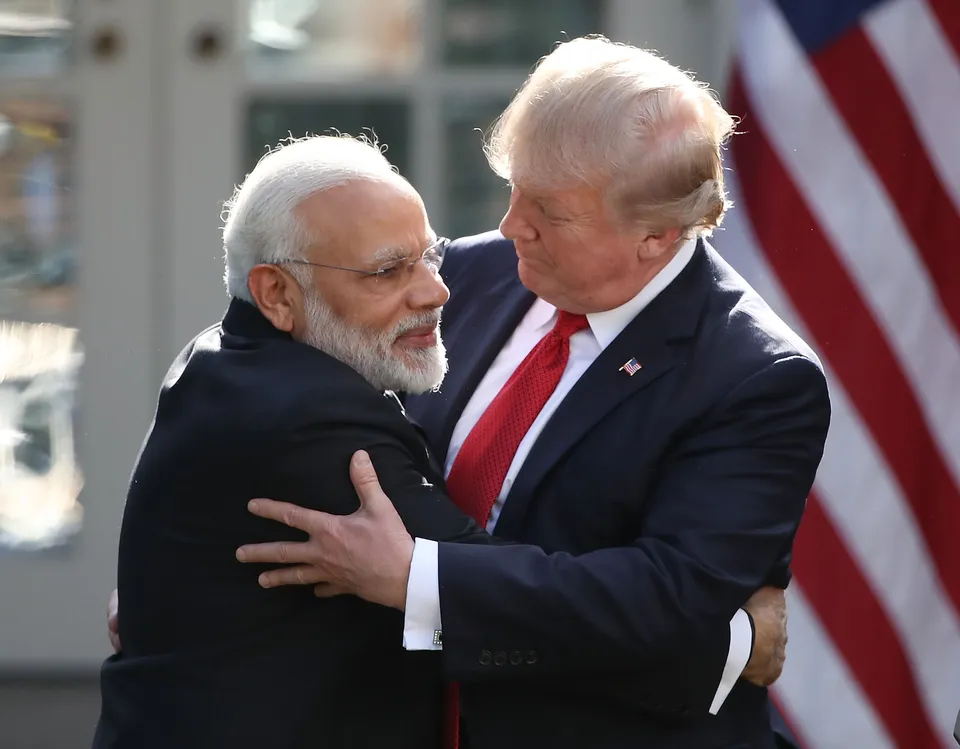
Prime Minister Modi and President Trump embrace during a moment of warmth in U.S.–India relations, before tensions flared over Russian oil and impending tariffs. Image: Mark Wilson/Getty Images.
(The Post News)– U.S. President Donald Trump has issued an executive order threatening to impose an additional 25% tariff on Indian goods on top of the existing 25%, unless India stops importing oil from Russia. Experts have argued that it is an unrealistic demand, as India has spent years strengthening its relationship with Russia.
In 2018, Trump made a similar demand for India to halt oil imports from Iran and Venezuela, which India complied with before the May 2019 deadline. However, experts now argue that the stakes are much higher, given the scale and strategic importance of India’s relationship with Russia. Currently, more than 35% of India’s oil imports come from Russia.
If India fails to comply by August 27, 2025, the additional 25% penalty will take effect unless Russia ends its war in Ukraine. Analysts believe this move increases pressure on both India and Russia ahead of next week’s meeting between Trump and Russian President Vladimir Putin and Putin’s upcoming visit to India for the annual summit with Prime Minister Narendra Modi.
Former Indian Ambassador to the U.S., Arun Singh, told The Hindu that India seeks to maintain its relationship with Russia not just because it is a major global power, but due to the deep historical ties between the two nations.
Singh highlighted that Russia has previously supplied political backing and defense technology that nobody else was keen to offer. He warned that yielding to Trump’s demands could set a precedent, making India vulnerable to future pressure from the U.S.
Meanwhile, strategic affairs scholar Brahma Chellaney criticized Trump’s use of penalties as a coercive tactic to force India into a one-sided trade deal. He pointed out that Trump has not imposed similar penalties on China, the largest importer of Russian oil, and noted that the U.S. is not part of the EU’s price cap on Russian oil. In Chellaney’s view, this suggests Trump’s primary aim is to pressure India into an agreement that benefits the U.S. alone.
Singh also reflected on the evolving India-U.S. relationship, which has steadily improved over the past 25 years. He recalled a time when India viewed the U.S. as a “coercive and unreliable partner,” a perception that began to shift after the U.S. helped India secure exemptions for nuclear trade in 2008.
Additionally, Singh warned that Trump’s actions risk reviving old, bitter memories and may do long-term harm to the bilateral relationship. Whatever Trump thinks he is doing to India, he is actually fracturing the relationship between the two countries. “It will take time to recover from the shock that has been generated,” he said.
Please share your thoughts by contacting Vuyiseka via email: journalist-Vuyiseka@thepostnews.net



